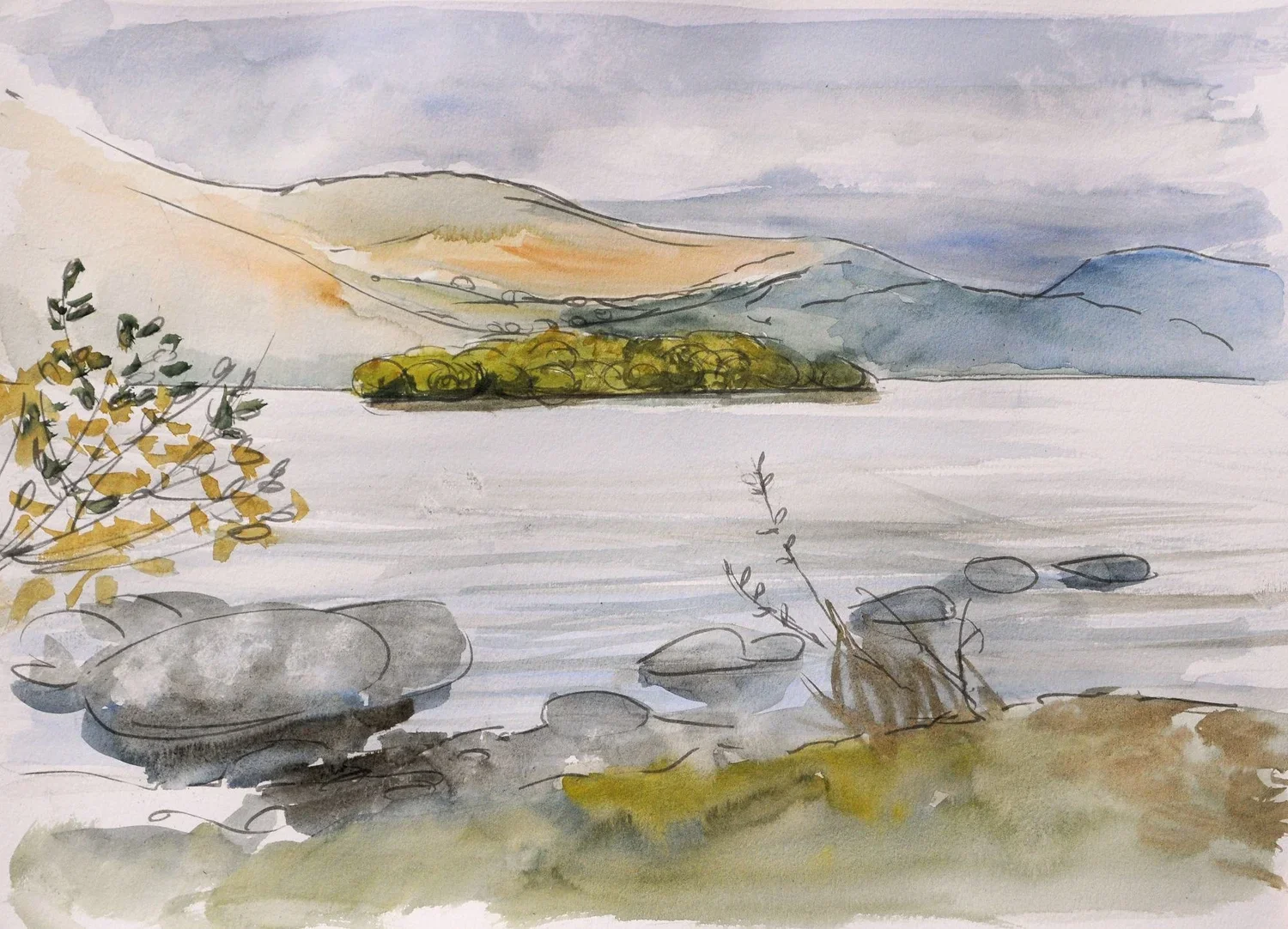
Beatrix Potter - Lake District Artist
In much the same way that Alison was the latest in a long line of painters in the Betws-y-coed Artists’ Colony, she is also following in the footsteps of some highly-regarded Lake District artists including Turner, Ruskin, and Beatrix Potter.
Beatrix Potter is best known for the children’s books featuring her illustrations, but early in her career she painted detailed studies of plants and wildlife, and later on produced many watercolours of the Lake District. Born to a wealthy middle class family in London, Beatrix was schooled at home and spent many hours with her brother Bertram painting her pets; developing her skills at observing and recording in watercolour plant and animal specimens. Her interest in natural history developed to the extent that she wrote a paper on the reproduction of fungi which was presented to the Linnean society. As women could not be admitted at this time, it was read by George Massee on her behalf.
Beatrix wrote illustrated picture letters to the children of family friends, which became the starting point for some of her stories. She self published Peter Rabbit as a little book with pen and ink illustrations, which she circulated around family and friends. Frederick Warne agreed to publish her work, suggesting that she add colour to her drawings.
The style of her illustration developed with a blend of clothed animal characters in settings that she often sketched from life, both fantasy and real gardens, potting sheds and landscapes. She was familiar with Aesop’s Fables and the Brothers Grimm, which would have inspired her tales.
Tragedy shaped Beatrix’s early life. She became engaged to Norman Warne, and her family disapproved of the match as he was 'in trade'. They were asked to spend time apart to test the relationship but sadly during that time he died. She sought space for her grief in the Lake District and purchased Hill Top. This property was not a permanent home but somewhere she spent time, furnishing it with old furniture as the type of dwelling her characters could have lived in.
Beatrix wrote over 20 little books and other works which provided her own independent income. She became interested in farming and while acquiring more land she began a relationship with William Heelis, a country solicitor whom she later married. She became a breeder of Herdwick sheep and a champion of the breed. With failing eyesight she published fewer works, devoting more time to her farms.
Beatrix Potter died in 1943, leaving twelve farms and much land to the National Trust. Some of these farms have permission only to graze Herdwicks, helping to preserve the breed.
When painting in the Lake District and visiting some of the places she painted, Alison often reflects on the productive life she led, how her books have given enjoyment to so many, and her legacy of conservation.
In 2021 Alison was approached by Channel 4 to contribute to a programme about Beatrix Potter in the Lake District, talking to host Mariella Frostrup about the pen and ink techniques Beatrix used in her paintings.
Alison and Mariella
Alison’s sketch of St Herbert’s Island
To demonstrate pen and ink technique, Alison recreated one of Beatrix Potter’s most famous paintings from The Tale of Squirrel Nutkin for Mariella. This painting depicts squirrels crossing the lake to Owl Island on rafts - in reality the island is St Herbert’s Island on Derwentwater, and the scene is viewed from the lakeside at the Lingholm Estate near Keswick.
After filming finished Alison painted her own study of the scene, minus the squirrels.
To see broadcast and catch-up details, please visit our Television Work page.
You may also be interested in viewing Alison’s original paintings of the Lake District.
